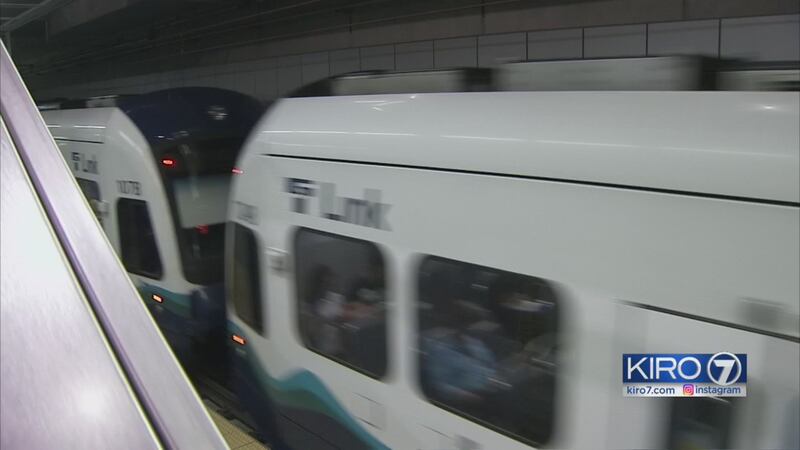Nora Gibson, of West Seattle, stood on a Ballard street corner one morning this summer and talked about how she got there.
"I just drove from West Seattle to Ballard, and it took me an hour and ten minutes," Gibson said.
Both neighborhoods would get light rail under the Sound Transit 3 expansion on the November ballot, and the agency says that trip on a train would take 33 minutes, including one transfer.
Gibson knows ST3 would raise her taxes, but she says, "I think it's worth the investment."
Compare that with Andrea Rapp's opinion.
She lives in Renton, which would get two stops on a new bus rapid transit line along I-405, but no light rail.
"I'm not going to get anything out of it," Rapp said. "How do I feel about that? I feel it's very unfair."
Regional Proposition 1 would extend taxes from two earlier light rail measures, passed in 1996 and 2008.
And it would create new property, sales and car tab taxes.
How much you would pay depends on where you live, the kind of car you drive, and how much money you spend.
Sound Transit has released a calculator for taxpayers to figure out their individual tax increases.
Everyone will share the cost, but some areas will benefit more than others.
"Everybody's asking what are we getting for all this money we're putting in," said Ramiro Valderrama, the deputy mayor of Sammamish.
Light rail would come to neighboring Issaquah and Redmond, but Valderrama says ST3 won't do much good in his city, which doesn't even have midday or weekend bus service.
"It's taxation without transportation," Valderrama said.
In Sammamish, average appraised home values are close to $700,000, and the city estimates a typical household would pay $872 in Sound Transit taxes if ST3 passes.
That's $326 in existing taxes plus $546 in new taxes.
For the entire Sound Transit district, which includes everything but rural King, Pierce and Snohomish counties, the agency estimates the typical household would pay $326 more in taxes per year.
That number comes from the per-adult estimate of $169, multiplied by 1.93, the number of people Sound Transit says is in the typical district household.
Sound Transit's estimate is based on a median home value of $360,658, which is above the average value in Pierce and Snohomish counties, but $110,000 below the average in more populous King County.
KIRO 7's Graham Johnson asked Sound Transit CEO Peter Rogoff if the agency's estimate for the typical adult is misleading.
"No," Rogoff answered. "We are very straightforward and transparent that it is an average for the Sound Transit region."
Bellevue City Councilmember Kevin Wallace opposes ST3.
"It's just too big of an economic burden to be placed on the families of our region," Wallace said.
Wallace predicts taxpayers could be hit with both ST3 and education levy reform next year, as the legislature works to comply with a court order to fully fund schools.
"The combined potential tax increases are far too high for us to take all at once," Wallace said.
King County Executive Dow Constantine told KIRO 7, "The issue around education funding is a bit of a red herring, because the property tax in Sound Transit 3 would only be about two percent of the total property tax collections, at least in King County."
ST3 supporters say there's another way to look at the costs of expanding light rail.
They point to AAA research calculating the cost of car ownership, now $8,558 per year.
"If families can go from two cars to one car because of this reliable transportation option, that's a benefit you can see to your community and your household budget," said Shefali Ranganathan, of Transportation Choices.
To calculate your tax increase under ST3, find Sound Transit's calculator here.
See KIRO 7's overview of the ST3 plan here.
Cox Media Group








